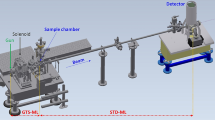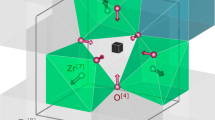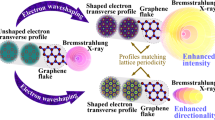Abstract
ONE of the major factors determining line-breadth in electron diffraction powder patterns has been shown1–3 to be the refraction of the electron beam resulting from the finite inner potential of the crystals. Striking differences in line-breadth occur in patterns from crystals of regular habit, such as the cubes of magnesium oxide and cadmium oxide smokes and the elongated hexagonal prisms of zinc oxide smoke. Certain reflexions, for example, h00 in magnesium and cadmium oxides, and 00l in zinc oxide, are sharply defined, and it has been shown by Cowley and Rees2 that the refraction components lie along these rings and do not contribute to the line-breadths. Moreover, any elongation of reflexions arising from the non-spherical symmetry of the scattering function about the reciprocal lattice points for zinc oxide of this habit will lie along these rings also. Nevertheless, these breadths are still greater than can be accounted for by limitation of crystal dimensions and the finite breadth of the beam.
This is a preview of subscription content, access via your institution
Access options
Subscribe to this journal
Receive 51 print issues and online access
$199.00 per year
only $3.90 per issue
Buy this article
- Purchase on SpringerLink
- Instant access to full article PDF
Prices may be subject to local taxes which are calculated during checkout
Similar content being viewed by others
References
Sturkey, L., and Frevel, L. K., Phys. Rev., 68, 56 (1945).
Cowley, J. M., and Rees, A. L. G., Nature, 158, 550 (1946); Proc. Phys. Soc., 59, 287 (1947).
Honjo, G., J. Phys. Soc. Japan, 2, 133 (1947).
Cowley, J. M., and Rees, A. L. G. (unpublished).
Lennard-Jones, J. E., Z. Krist., 75, 215 (1930).
Author information
Authors and Affiliations
Rights and permissions
About this article
Cite this article
REES, A., SPINK, J. Line-Breadth in Electron Diffraction. Nature 165, 645 (1950). https://doi.org/10.1038/165645a0
Issue date:
DOI: https://doi.org/10.1038/165645a0



